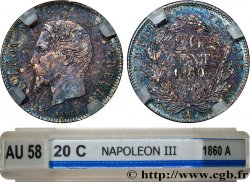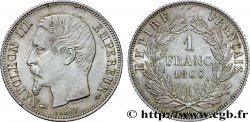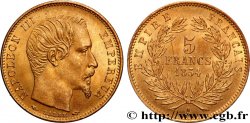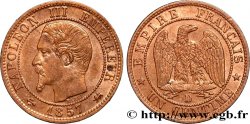fmd_142976 - Faux - Rognage de 10 francs or Napoléon III, tête laurée 1865 Strasbourg F.507A/11
недоступный.
Товар уже продан в нашем интернет-магазине
Цена: : 190.00 €
Товар уже продан в нашем интернет-магазине
Цена: : 190.00 €
Тип Faux - Rognage de 10 francs or Napoléon III, tête laurée
Дата: 1865
Монетный двор / Город: Strasbourg
Металл: gold
Проба: 900 ‰
Диаметр: 19 mm
Ориентация осей монеты: 6 h.
Вес: 2,96 g.
Век: cannelée
Редкость: R2
Комментарии о состоянии
Usure régulière de circulation sur l’ensemble des reliefs. Exemplaire cependant convenable
Ссылки в каталоге: :
Лицевая сторона
Аверс: легенда: NAPOLEON III - EMPEREUR .
Аверс: описание: Tête laurée à droite ; signé BARRE au-dessous.
Обратная сторона
Реверс: легенда: EMPIRE FRANCAIS// BB .
Реверс: Описание: 10/ FRANCS/ 1865 dans une couronne formée de deux branches de laurier.
Комментарий
Un cas semblable de rognage a été étudié dans le BN n° 20 page 7. Le diamètre de cet exemplaire plus petit (18 mm au lieu de 19), son poids plus léger (2,96 g au lieu de 3,2258 g) et surtout la forme de sa tranche sont identiques à ceux de la pièce décrite dans l’article du BN (il s’agissait d’une 1862 A). Cette pièce est authentique mais elle a été applatie donc truquée à l’époque, ce qui lui confère un intérêt réel de collection comme « truqué pour servir ». Le principe est simple. Il suffit aux fraudeurs de prendre une pièce de circulation, de la presser contre du bois dur ou contre du plomb et de la serrer très fortement. Une fois écrasée, on récupère de l’or en gagnant un demi-millimètre (pas plus, pour éviter que la pièce soit refusée dans le commerce après sa remise en circulation !), en coupant le tour puis on lui fait une nouvelle tranche cannelée afin de peaufiner le travail. Enfin la pièce repart en circulation, délestée de 0,25 grammes d’or, soit environ 1 franc. Pratiquée à une échelle semi-industrielle, par exemple avec la complicité d’un caissier de banque, l’opération peut se révéler très rentable à une époque où le SMIC tourne autour de 100 francs par mois. Une dernière question subsite enfin : cette pièce a-t-elle été fabriquée par le même faussaire qui a fait celle de l’article paru dans le BN ? Cela est tout à fait possible bien que nous n’en ayons pas la preuve.








 Cообщить об ошибке
Cообщить об ошибке Распечатать страницу
Распечатать страницу Отправить мой выбор
Отправить мой выбор Задать вопрос
Задать вопрос Consign / sell
Consign / sell
 Информация
Информация



